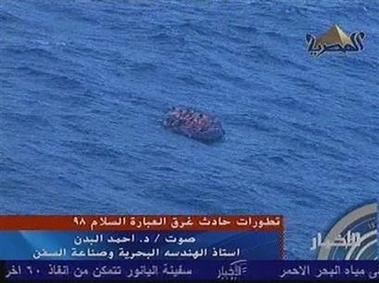|
Most of 1,400 on Egypt ferry feared lost
(AP/Reuters)
Updated: 2006-02-04 08:26
An aging ferry sank in the choppy waters of the Red Sea on Friday with more
than 1,400 people on board, mainly Egyptian workers returning from Saudi Arabia.
Most were feared lost but officials said at least 314 made it to safety.
A spokesman for President Hosni Mubarak said the ferry did not have enough
lifeboats, and questions were raised about the safety of the 35-year-old,
refitted ship that was weighed down with 220 cars as well as the passengers.
"It's a roll-on, roll-off ferry, and there is big question mark over the
stability of this kind of ship," said David Osler of the London shipping paper
Lloyds List. "It would only take a bit of water to get on board this ship and it
would be all over. ... The percentage of this type of ferry involved in this
type of disaster is huge."
Weather may also have been a factor. There were high winds and a sandstorm
overnight on Saudi Arabia's west coast.
Officials said more than 185 bodies were recovered while hundreds remained
missing in the dark, chilly sea nearly 24 hours after the ship went down. One
lifeboat was spotted from a helicopter during the day bobbing in the waves with
what appeared to be about a dozen or more passengers.

This is an aerial image from TV which shows
people in a dinghy in the Red Sea, Friday, Feb. 3,
2006.[AP] |
Hundreds of angry relatives of the
passengers crowded for hours outside Egypt's port of Safaga, where the ferry had
been heading. They shouted at police barring the iron gates and complained they
had no information on their loved ones.
"This is a dirty government, may God burn their hearts as they burned mine,"
one woman wailed, slapping her face in grief. "I want my brother. I have no one
else in this life."
A Transport Ministry spokesman said 314 people, including a 3-year-old child,
were rescued.
Some of the survivors were taken from the ferry's lifeboats, others from
inflatable rescue craft dropped into the sea by helicopters, and others were
pulled from the water wearing life jackets, the governor of Red Sea province,
Bakr al-Rashidi, told The Associated Press.
A police official at the operations control room in Safaga said 185 bodies
were pulled from the sea. The official spoke on condition of anonymity because
he was not authorized to speak to the press.
Well after nightfall, there were contradictory reports whether any survivors
had been brought to shore. A security official said 20 had been sent to a Safaga
hospital, but police at the port's entrance told families none was back. Police
ringed the hospital.
Rescue efforts also appeared confused. Egyptian officials initially turned
down a British offer to divert a warship to the scene and a U.S. offer to send a
P3-Orion maritime naval patrol aircraft to the area. The British craft, HMS
Bulwark, headed from the southern Red Sea where it was operating, then turned
around when the offer was rejected.
But then Egypt reversed itself and asked for both the
Orion and the Bulwark to be sent — then finally decided to call off the Bulwark,
deciding it was too far away to help, said Lt. Cdr. Charlie Brown of the U.S.
5th Fleet, based in Bahrain. In the end, the Orion — which has the capability to
search underwater from the air — was sent, but the Bulwark was not, he said.
|